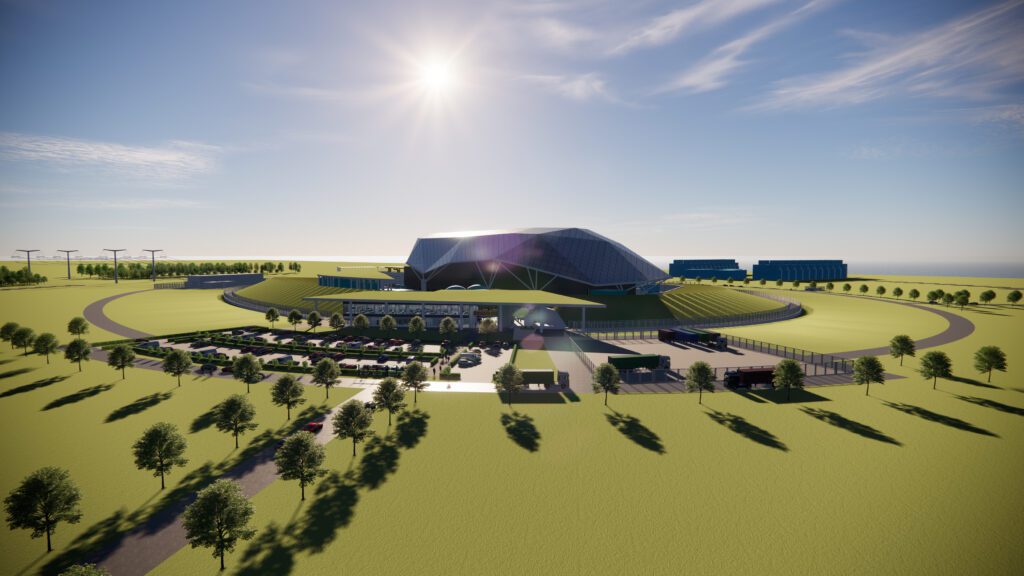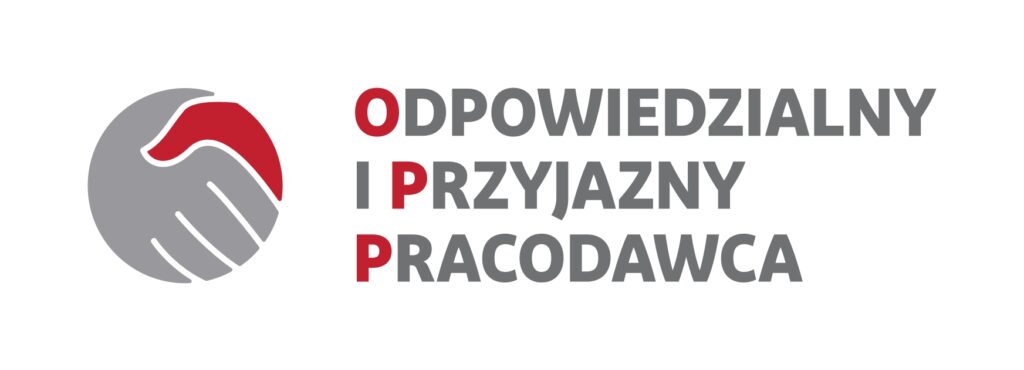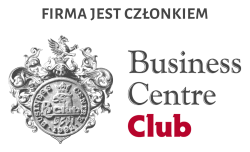Swelling fuel and food prices. Dependence on the supply of energy carriers. Nature destruction and climate change. The challenges faced by mankind and also by the Poles are numerous and their number is constantly growing.
Solutions must be sought, and one of the key areas of this search should be the energy sector. High energy prices translate into higher food prices, poverty, and also weaken the balance of trade in Poland, because we import most of raw materials that we consume. In turn, the ever-increasing activity of energy companies searching for oil, coal and gas contributes to the destruction of yet more ecosystems, as the energy requirement of our civilisation has no limits. The implementation of artificial intelligence, the electrification of industry and transport, the use of industrial heat pumps will further boost the demand for electric energy. The mankind needs systemic solutions. So does Poland, as we need to ensure simultaneously a stable energy supply, to enhance energy security and to reduce greenhouse gas emissions (GHG).
The booming economies in Asia with constantly growing competitive edge are eyeing the nuclear power (NPP) as a solution. The use of uranium allows for zero-carbon energy generation regardless of weather conditions and can be a great supplement to renewable energy sources (RES). Indeed, RES energy generation is subject to large fluctuations throughout the day and the year and therefore needs expensive battery systems, which in addition either rely on raw materials that require environmentally damaging technologies or generate considerable geopolitical risks (cobalt, lithium, high-grade nickel). The technological breakthrough, which is the implementation of Small Modular Reactors (SMRs) provides now an opportunity to face the aforementioned challenges, while generating significant benefits for Poland, including the Świętokrzyskie region. The use of nuclear energy as an important component of Poland’s energy mix is, moreover, an objective in the PEP 2040 concept and the Polish Nuclear Power Programme.
SMRs offer a high degree of flexibility in terms of the location, configuration and use of the generated energy (including for the purposes of district heating and hydrogen production), and are expected to provide a faster, simpler and cheaper implementation process through significant prefabrication and easy logistics. Mankind will be able to manufacture power plants at a rapid pace, eliminating old technologies that are harmful to health and environment. Similarly to Henry Ford and his revolution in car manufacturing, SMRs will ultimately be mass produced, relatively cheap and more accessible to developing countries. Radiation protection and safety requirements will hinder wide availability of SMR, but the scale of production beyond 2030 should create a new industry branch with worldwide exposure.

In case of this technological breakthrough, similarly to H. Ford’s revolution, the key factor will be time to market, i.e. which company will deliver high volume of reactors faster. At present the predisposed ones seem to be the leading manufacturers of complex technological plants with experience in the nuclear power sector. These are GE Hitachi and the UK’s Rolls-Royce. Both companies manufacture small reactors for submarines and at the same time, for instance, aircraft turbines. The corporations are ready to implement the comprehensive safety and certification systems required in the NPP industry and to handle long global supply chains. Of these, Rolls-Royce manufactures reactors for the Royal Navy on an on-going basis, is a company focused primarily on the European market, has a well-thought-out concept of combining design with the supply chain and clearly declares its willingness to cooperate with local manufacturers of parts and services, including the transfer of manufacturing plants to Poland.
Future SMR manufacturer Rolls-Royce Ltd has set up a consortium with a number of companies experienced in the nuclear power sector. Rolls-Royce is the major supplier and designer of the nuclear technology and one of its 3 major investors is Constellation, the US operator of 21 nuclear power plants. It should be noted that the UK government is providing organisational and financial support (at least £215 million to date) for the Rolls-Royce reactor development. There are plans to build 16 nuclear power plants in the UK by 2040.
The consortium indicates that the UK manufacturing base will not be sufficient for UK reactors, the more to handle export projects, so it intends to construct plants close to the locations of the projects under construction and to use local manufacturers and providers of parts as well as civil construction services.
It is worthwhile to realise the market size and the potential benefits that are at stake. Rolls-Royce expects to create up to 42,000 jobs in the UK as part of the supply chain for the planned manufacturing of SMRs by 2040.
With the high demand for SMRs, factories can produce modules for 2-3 nuclear power plants simultaneously per year. The installation of SMRs is much simpler (modules are not bigger than a regular container) and faster than large power plants. It is estimated that one SMR will take up to 4 years to construct. The construction of a higher number of SMRs reduces costs and time due to economies of scale, by taking advantage of lessons learnt, and flexibility of module supply. Considering that one Rolls-Royce reactor is almost 500 MW, in effect the equivalent of a large coal-fired power plant (for comparison sake the Bełchatów power plant has the capacity of 5500 MW) will be built in 4-5 years.
All these is certainly under the assumption that the authorisation and certification process is not a road block and that the supply chain itself works smoothly. Indeed, the construction of an SMR reactor requires the supply of more than 2,500 units. Standardisation and large scale production reduces the construction cost (according to Rolls-Royce, currently £2 billion for almost 470MW of capacity) and operating the plant, while opening up the space for plants that previously would not have dreamed of supplying nuclear power. Standardisation, large scale production and cost streamlining implies that more manufacturers can compete for a position in the supply chain. This applies especially to units made of non-nuclear parts, prefabricated components, electric systems, assembly services, etc.
Bearing in mind that the party cooperating with Rolls-Royce is the Świętokrzyska Industrial Group INDUSTRIA, a member company of the Industrial Development Agency (IDA) Group, the priority of the project is to open up the supply chain for the Polish companies. Companies working for the oil & gas, aerospace or metal sectors, which have already come across foreign certification systems and safety requirements, will potentially have an easier start, but an opportunity will cover more specialisations. The construction of several or more SMRs in Poland will allow Rolls-Royce factories to be relocated to the Świętokrzyskie Province. There is an opportunity to involve a number of companies within and outside the IDA Group in the supply chain for the construction of the SMR plant and the operation of the plants required to assemble its modules. The potential candidate companies include Chemar (for piping and metal components), the Pneumatics Production Centre “PREMA” (for pneumatic equipment, industrial automation), possibly Creotech Instruments (for components for Control & Instrumentation systems) or Świętokrzyskie Mineral Raw Material Quarries (aggregates supply for construction). In the area of electrical connections, energy transmission and distribution, among other things, Energia Europark Mielec could be involved. A manufacturer of motors, generators and cooling modules from the Mielec Special Economic Area (e.g. Enervigo) would also potentially be involved. The manufacturers of precast concrete products would also benefit. The geographic proximity of the SMR project makes it easier for Rolls-Royce and/or members of its supply chain to locate plants in the Świętokrzyskie Province, e.g. in the Special Economic Area or in the Wisłosan or Europark Mielec industrial parks.
The academic centres (e.g. Jan Kochanowski University) will also become active as training and research facilities for the new industry. During the construction of a single Rolls-Royce SMR power plant, 500 people will be employed directly. The SMRs have to be operated on a 3-shift basis by approximately 150 people on each shift (most local workers, following appropriate training). In addition, indirect jobs will be created in logistics, training, accommodation. The development of the Polish supply chain will be supported by academic and training facilities in the Świętokrzyskie Province. As in the UK, a programme may be established to support Polish companies in their preparations to enter the nuclear sector. The British Fit for Nuclear programme operated by the Nuclear Advanced Manufacturing Research Centre (NAMRC) has developed a step-by-step certification system that allows not only large companies to verify the requirements of the nuclear energy sector, but also smaller companies to identify competency and asset gaps. Once a company has been certified under the Polish Fit for Nuclear framework, it would stand a higher chance to join the nuclear power plant manufacturer verification programme. These are time-consuming and demanding processes, hence the Polish centre will be required to facilitate companies’ entry into the market. Ultimately, the centre in the Świętokrzyskie Province could become an R&D centre where scientists and engineers will help Polish companies develop innovative technologies that will find their way into various components and services for the nuclear power plant.
The planned SMR construction will bring a stable source of zero-carbon electric energy, heat and hydrogen generation to the region. Securing the region’s supply of clean energy boosts the attractiveness for investment projects, including those involving foreign capital. One of the beneficiaries could be the region’s glass works, metal works and cement plants.
Importantly, the SMR market is just taking off. Let us remember that SMRs are currently in the early phases of preparation for their first commercial deployments. A number of demonstration or pilot reactors are due to be commissioned by the end of this decade. The period of building a supply is just beginning. Future SMR manufacturers are verifying the requirements for the components used at the power plants, determining the scale of demand, and negotiating with countries that want to order higher numbers of SMRs. Indeed, this is a bundled deal, the giving access to the market is supposed to be combined with the transfer of the value chain. Therefore it is worthwhile to monitor the pace of negotiations, contacting the centres responsible for supporting Polish industry and preparing for the required certification and implementation of quality systems.



